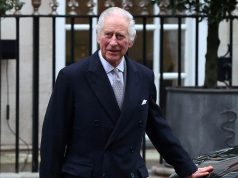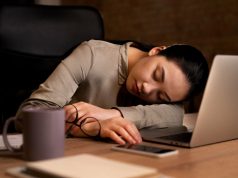Surveys on lifestyle and longevity consistently find that people who do more exercise live longer. So it is surprising to see a report from the Finnish Twins Cohort Study that there is little direct effect of “leisure time physical activity” on lifespan. What makes this study different from others – and is it right?
Human behavior and biology are complex and interact with wider society and the environment. How much exercise a person gets could be linked to their genetics, diet, disabilities, education, wealth, or just whether they have enough leisure time and a safe green space. Each of these factors could also be linked to lifespan in different ways.
You can probably think of a dozen other things that might be associated both with a person’s health and the amount of exercise that they do. The direction of the causation will not always be clear. Although it is certainly true that people who exercise more will, on average, live longer, it is far more difficult to know how much is caused by the exercise itself, versus these other factors.
How can we hope to isolate this single causal effect from the complexity of people’s lives?
Studies of twins can help us here. Twins have similar or identical genetics and early life experiences, so we can more directly test how differences in their later-life behaviour affect lifespan.
This is precisely the approach taken by researchers at the University of Jyväskylä in Finland. They used exercise questionnaires given to 11,000 pairs of adult same-sex twins in 1975, 1981 and 1990, and linked this to death records up to the year 2020.
Least and most active groups biologically older
They found that, as expected, the most active had a 24% lower rate of death compared with the least active. This effect is smaller than suggested by previous studies, and most of the excess risk was confined to the least active 10% of the study participants.
They also looked at biological age, measured by the degree of DNA damage (methylation) and, surprisingly, found that both the most and the least active groups appeared biologically older than the others.
Pairing twins deals with genetics and early life differences, but what about other aspects of health behavior?
When smoking, alcohol consumption and body mass index (BMI) were taken into account in the analysis, the link between exercise and longevity was much reduced, with only a 9% difference in death rate between the least active group and others – and no difference between the highly and moderately active. In other words, for a hypothetical twin pair with very different activity levels but the same smoking history, alcohol use and BMI, there would be very little difference in life expectancy.
But what does it mean to change exercise levels while all other aspects of health remain constant? For example, if the effect of exercise on death was mediated by weight loss, then this analysis would not reveal that link. And if exercise increases but weight does not change, then must something else be compensating?
There was also some evidence that the effect of exercise was stronger in the first 20 years after the assessment compared to the subsequent decade. So it is possible that exercise needs to be maintained to keep its longevity benefits into later life.
This would agree with evidence from clinical trials that show more immediate benefits of exercise interventions on health in people with existing conditions.
Smaller role than previously thought
So what can we safely conclude from these new findings – which have won a national sports medicine prize in Finland, but are yet to be peer-reviewed?
Clearly, people who exercise more live longer on average. Genetics, social factors, existing health and other aspects of lifestyle explain some of the association. We should not rule out a direct link between exercise and longevity, but this study suggests that it may have a smaller role than previously thought.
Nevertheless, experimental evidence shows that exercise can prevent illness and disability, improve mood and overall quality of life, which many would regard as more meaningful outcomes than lifespan alone.
It can be difficult for people to maintain lifestyle changes, and so social and environmental efforts, such as maintaining high-quality green spaces, to support healthy lifestyles are important.
Social inequalities in health and lifespan exist and are growing so it’s vital that we continue to refine our understanding of the reasons why and what we should do about it.![]()
George M. Savva, Senior research scientist, Quadram Institute. This article is republished from The Conversation under a Creative Commons license. Read the original article.










